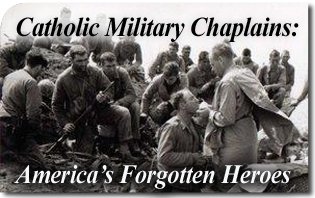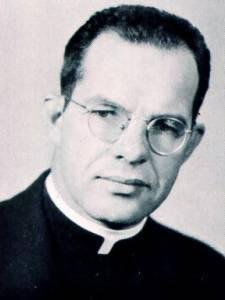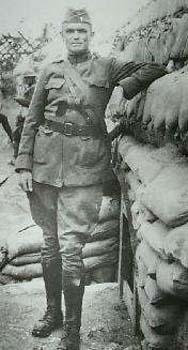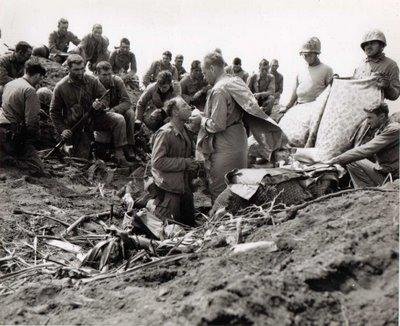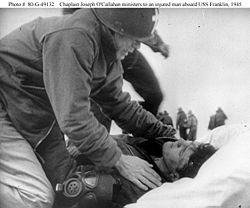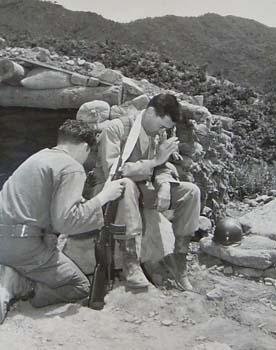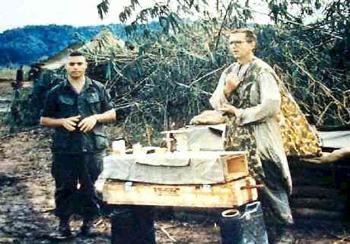.
July
July 24 — St. Patrick of Cedar Lake, Jordan: Outdoor Mass at 10 a.m. at 24425 Old Hwy. 13 Blvd. Chicken dinner follows, as well as live music, children’s games, country store, beer garden and more.
July 29 to 31 — Immaculate Conception, Columbia Heights: Fun Fest Summer Jam 5 to 10 p.m. Friday, 4:30 to 10:30 p.m. Saturday and 10 a.m.to 4:30 p.m. Sunday at 4030 Jackson St. N.E. Features live music, games, a car show and more. For information, visit http://www.immac-church.org
July 30 and 31 — St. Mark, Shakopee: Julifest begins with outdoor polka Mass at 5 p.m. Saturday followed by a street dance from 7 to 11 p.m. at 350 S. Atwood St. Sunday includes entertainment, craft and bake sale, beer garden and more.
July 30 and 31 — St. Alphonsus, Brooklyn Center: Fun Fest with live entertainment all weekend, food from around the world, 5K Fun Run, classic car show and more. Multicultural Mass at 11 a.m. Sunday at 7025 Halifax Ave. N.
August
August 5 to 7 — St. Raphael, Crystal: 6:30 to 11 p.m. Friday with music by River City Express at 7301 Bass Lake Road. Continues Saturday noon to 11 p.m. and Sunday noon to 7 p.m. with food, music, softball tournament and more.
August 6 and 7 — St. John the Baptist, Dayton: Street dance 7 to 11 p.m. Saturday at 18380 Columbus St. Continues Sunday 11 a.m. to 4:30 p.m. with a chicken dinner until 2:30 p.m., wine tasting, flea market, pony rides and more.
August 7 — Divine Mercy, Faribault: Spiritfest from 9 a.m. to 5 p.m. at 139 Mercy Drive. Features food, raffles, live music and more. For more information, visit http://divinemercy.cc
August 7 — St. John Vianney, South St. Paul: Feast of St. John Vianney and pig roast begins with outdoor Mass at 10:30 a.m. with Bishop Lee Piché at 789 17th Ave. N. Potluck at 11:30 a.m. followed by a baseball game, St. John Vianney vs. Holy Trinity.
August 7 — St. John the Baptist, Hugo: Old fashioned community picnic from 11 a.m. to 3 p.m. at 14383 Forest Blvd. Features brats, hot dogs and fresh sweet corn, music, craft fair, baking contest and more.
August 7 — St. Anthony of Padua, Minneapolis: Summerfest begins with a polka Mass at 11:30 a.m., followed by festival from noon to 5 p.m. at 813 Main St. N.E. Live music, food, bake booth, crafts and more.
August 7 — Immaculate Conception, Lonsdale: Polka Mass at 10 a.m. followed by a roast beef dinner served until 2 p.m. at 116 Alabama St. S.E. Also features a bakery booth, music, games and bingo.
August 13 and 14 — St. Joseph, Lino Lakes: Outdoor Mass at 5 p.m. Saturday with a pig roast and dance to follow. Fireworks at 10 p.m. Sunday begins with a chicken dinner, and games and events follow at 171 Elm St.
August 13 and 14 — St. Vincent de Paul, Brooklyn Park: Begins Saturday at 8:30 a.m. with “Faster than the Pastor” 5K race and a talent show from 1 to 4 p.m. Continues on Sunday with food, games and more. Visit http://www.saintvdp.org
August 13 and 14 — St. George, Long Lake: Corn Days from 1 to 11 p.m. Saturday featuring fresh roasted corn, authentic Mexican food, live music, games, raffle and more. Sunday Mass at 9:15 a.m. followed by a pancake breakfast and parade at noon. Festival from noon to 4:30 p.m. at 133 N. Brown Road. Visit http://www.corndays.com
August 13 and 14 — St. Wenceslaus, New Prague: Polka Mass at 5 p.m. Saturday followed by a euchre tournament, bean bag tournament and video game competition at 215 Main St. E. Also features booths, food and beer tent. Polka Masses Sunday at 8:30 and 10 a.m. followed by a grilled chicken dinner, children’s carnival and more. Visit http://www.saintwenceslaus.org/parish/festival.html
August 19 to 21 — St. Gerard, Brooklyn Park: Corn Fest from 6 to 11 p.m. Friday, 4 to 11 p.m. Saturday and noon to 4 p.m. Sunday at 9600 regent Ave. S. Features live entertainment, games and food, including fresh sweet corn. Friday night music by Zebra Mussels, Saturday is Boogie Wonderland. Visit http://www.st-gerard.org
August 21 — St. Mary of the Purification, Marystown, Shakopee: 11 a.m. to 6 p.m. at 15850 Marystown Road. Features a country-style smorgasbord from 11 a.m. to 2 p.m. with more food available under the tents at 1 p.m. Includes games, quilt auction, wall of wine, and music by Czech Area Concertina Club from 4 to 6 p.m.
August 21 — St. Bernard, St. Paul: 11:30 a.m. to 4 p.m. at 187 Geranium Ave. W. Outdoor Mass at 10:30 a.m. followed by entertainment, booya, country store and more. Food, including fried bananas, will be available.
August 21 — St. Mathias, Hampton: Fun Fest begins with a polka Mass at 11 a.m. at 23315 Northfield Blvd. followed by food from noon to 3:30 p.m., country store, games and live country music.
August 21 — St. Cyril and Methodius, Minneapolis: Polka Mass at 10:30 a.m. followed by festival from 11:30 a.m. to 5 p.m. at 1315 Second St. N.E. Food includes Polish sausage, hot dogs, cabbage rolls (Holubky) and Hispanic foods. The Don Pafko and Lipa Slovak Dancers will perform at about 1 p.m.
August 21 — Most Holy Trinity, Veseli: Annual Ho-down begins with a polka Mass at 11 a.m. at 4939 N. Washington St. Features a chicken cook-out, home baked Kolacky, tea rings and mocha cakes, games and music until 6:15 p.m.
August 21 — St. Bridget, Minneapolis: Backyard BBQ from 10:30 a.m. to 4 p.m. at 3811 Emerson Ave. N. Includes a pig roast, spaghetti dinner, silent auction, children’s games and more.
August 21 – St. Genevieve, Centerville: Annual country chicken dinner & picnic. Crafts, Silent Auction, Amusements, Bingo, Cake Walk, Children’s Games, Raffle (cash prizes). Serving 11 a.m. – 4 p.m. Adults $8.50, Children $4 (age 10 and under). 6995 Centerville Road.
August 28 — St. Luke, Clearwater: 10 a.m. polka Mass followed by a pork chop dinner at 17545 Huber Ave. N.W. Features square dancing, live music, food booths, games and quilt auction.
September
September 9, 10, 11 — St. Patrick, Oak Grove: Countryfest begins with a teen dance Friday from 8 to 11 p.m. at 19921 Nightingale St. N.W. Saturday features a 5K Fun run/walk, Highland games, magic show and fireworks. Mass at 9 a.m. and 11 a.m. Sunday with games and more from noon to 4 p.m. and classic car show until 3 p.m. Visit http://www.st-patricks.org
September 9, 10, 11 — Our Lady of the Lake, Mound: 33rd Incredible Festival features live music, 5K run, carnival rides and games, beer tent and more throughout the weekend. BBQ chicken dinner served at noon Sunday at 2385 Commerce Blvd.
September 10 — St. Ignatius, Annandale: Polka Mass at 4 p.m. at 35 Birch St. E., followed by a pork chop dinner, live polka music from 5 to 7 p.m., bingo, raffles, beer garden and more. Music by Unleaded from 7 to 9:30 p.m.
September 10 — Holy Name of Jesus, Wayzata: Outdoor tent Mass at 4:30 p.m. followed by dinner at 155 County Road 24. Features performances by Sonar and Tim Mahoney (featured on “The Voice”) after dinner.
September 10 and 11 — St. Odilia, Shoreview: Saturday noon to 10:30 p.m. and Sunday from noon to 5 p.m. at 3495 N. Victoria St. Features grill foods and authentic Latino foods, games, marketplace/boutique, and more. Local talent is featured all weekend including Dan Perry and the Ice Cream Band. Visit http://www.stodilia.org
September 10 and 11 — St. Michael, St. Michael: Saturday bingo from 2 to 5 p.m., polka Mass at 4:30 p.m. in the historic church on Main Street and German dinner from 5 to 7 p.m. Sunday features a chicken dinner, games, petting zoo, country store and more at 11300 Frankfort Parkway N.E.
September 10 and 11 — Sacred Heart, Robbinsdale: Fun Fest begins with 4 p.m. Mass Saturday followed by food, games and live music with The Dweebs at 4087 Broadway Ave. Continues Sunday at 11 a.m. Visit http://www.sacredheartrobbinsdale.org
September 10 and 11 — St. Mary of the Lake, White Bear Lake: Saturday features a 5K run/walk at 3 p.m., outdoor Mass at 5 p.m. followed by a spaghetti dinner at 4690 Bald Eagle Ave. Turkey dinner served from noon to 3 p.m. Sunday. Activities also include games and inflatable rides for the kids. Visit http://www.stmarys-wbl.org
September 11 — Our Lady of Mount Carmel, Minneapolis: Mass at 8 and 10 a.m. with Marian procession following the 10 a.m. Mass at 701 Fillmore St. N.E. Spaghetti dinner served from noon to 4 p.m. Also features games, raffles and door prizes.
September 11 — Sacred Heart, St. Paul: 10 a.m. to 4 p.m. at 840 E. Sixth St. Features authentic Mexican food, American food, music dancers, games and more.
September 11 — St. Joseph, Rosemount: Parish picnic at 11:30 a.m. with “pork chop on a stick” lunch, bingo and kids’ games at 13900 Biscayne Ave. W.
September 11 — Our Lady of the Prairie, Belle Plaine: Praise and worship Mass at 10 a.m. with a chicken and ham dinner to follow until 2 p.m. at 214 N. Chestnut St. Also features live music, food stands, games and a wood auction.
September 11 — St. Mary, Stillwater: Wild Rice Festival and chicken dinner from 11a.m. to 4 p.m. at 423 S. Fifth St. Also features kids’ and teen games, fancy work, quilts and more.
September 16 to 18 — St. Patrick, Inver Grove Heights: Begins Friday with a wine and beer tasting event with live music and dancing from 7 to 9 p.m. Saturday Mass at 4 p.m. followed by a taco dinner, bingo and games. Continues Sunday with a classic car show from noon to 5 p.m.
September 16 to 18 — St. Helena, Minneapolis: Autumn Daze from 5 to 10 p.m. Friday, 10 a.m. to 5 p.m. Saturday and 11:30 a.m. to 5 p.m. Sunday at 3204 E. 43rd St (near Hiawatha & 42nd). Fish Fry and Fireworks Friday night, Saturday parade in the a.m., carnival rides and games, book sale, raffles, food, cake and wine walks, bingo, rummage sale and the works.
September 16 to 18 — Nativity of Our Lord, St. Paul: Nativity County Fair from 5 to 10 p.m. Friday, 10 a.m. to 5 p.m. Saturday and 11:30 a.m. to 5 p.m. Sunday at 1900 Wellesley Ave. Includes an online auction, craft fair, rides, games, food and more. Outdoor Mass at 10:30 a.m. Sunday. Visit http://www.nativitycountyfair.org
September 16 to 18 — at St. Francis Xavier, Buffalo: Glory Days celebration begins 5 to 11 p.m. Friday with a carnival, beer tent, music and fireworks. Continues Saturday 11 a.m. to 11 p.m. with children’s activities, 5K race, bean bag toss contest and more. 11 a.m. to 4 p.m. Sunday with a chicken dinner, carnival, raffles and more at 223 19th St. N.W. Visit http://www.stfxb.org
September 16 to 18 — Transfiguration, Oakdale: Dinner Friday evening followed by a teen dance, arcade and rides. Saturday features a 5K family run/walk, games, food and music by GB Leighton. Sunday outdoor Mass at 10:30 a.m. followed by a breakfast at 6133 15th Ave. N.
September 17 to 18 — St. Matthew, St. Paul: Begins with a chicken dinner at 5 p.m. Saturday with activities including games, an antique car display, wacky hair styles and face painting until 10 p.m. More Sunday from 11:30 a.m. to 4 p.m. at 490 Hall Ave.
September 17 — St. Rose of Lima, Roseville: Barbecue dinner from 5:30 to 8:30 p.m. at 2048 Hamline Ave. N. Live music, kids’ games, bingo and more from 6:30 to 10 p.m.
September 17 and 18 — St. Elizabeth Ann Seton, Hastings: 1:30 p.m. start for golf tournament Saturday at the Hastings Country Club. Festival Sunday 12:30 to 4:30 p.m. at 2035 15th St. W. features games, pony rides, raffles and more. Visit http://www.seasparish.org
September 17 and 18 — Our Lady of Guadalupe, St. Paul: 6 p.m. to midnight Saturday with music, food, dancing and coronation of the queen. Continues Sunday noon to 6 p.m. with music, food and kids’ games at 401 Concord St.
September 17 and 18 — All Saints, Lakeville: Hilltop Autumn Fest from 9 a.m. to 4 p.m. Saturday at 19795 Holyoke Ave. Craft fair, farmers market and more. Continues Sunday with a dinner. Visit http://www.allsaintschurch.com
September 18 — St. Canice, Kilkenny: Mass at 10 a.m. followed by a chicken and ham dinner served until 2 p.m. at 183 Maple St. Activities from 11 a.m. to 3 p.m. include a country store, jar bar, crafts and raffles.
September 18 — Immaculate Conception, Watertown: Turkey dinner from 11 a.m. to 1:30 p.m. at 109 Angel Ave. N. Also features a silent auction, raffle, country store and games for all ages.
September 18 — St. Jerome, Maplewood: Outdoor Mass at 10:30 a.m. followed by festival activities including pony rides, cherry tree and a car show at 11:30 a.m. Booya and other grilled foods will be available. Booya available for take-out at 7 a.m. (bring a non-glass container), 380 E. Roselawn Ave.
September 23 — Holy Childhood, St. Paul: Taste of Como Oktoberfest from 5 to 9 p.m. at 1435 Midway Parkway. Wine and food sampling and music. This is an adult-only event. Cost is $15 in advance, call (651) 489-2428. Cost is $20 at the door.
September 23 to 25 — St. John the Baptist, New Brighton: Fallfest begins with Friday evening festivities, continues with Saturday polka Mass and street dance and Sunday Booya at 835 2nd Ave. NW. Also features children’s games, food, shopping and more. Visit http://www.stjohnnb.com
September 24 — Guardian Angels, Chaska: ‘Tunes and Food’ from noon to 11 p.m. at 215 W. Second St. Old-time music in the afternoon followed by a polka Mass at 4 p.m. More music follows. Also features American and ethnic foods, country store craft sale and more. Visit http://www.angelfest.org
September 24 and 25 — Cathedral of St. Paul, St. Paul: Saturday activities include the Cathedral Art Fair and “Tacos in a Bag” served by the Knights of Columbus. Traditional festival Sunday from 11 a.m. to 4 p.m. with live music, cake walk, petting zoo and more at 239 Selby Ave. Visit http://www.cathedralsaintpaul.org
September 24 and 25 — St. Michael, West St. Paul: Outdoor Mass at 5 p.m. Saturday followed by a lasagna dinner and silent auction at 337 E. Hurley St. Beginning Sunday at 11:30 a.m. are kids’ games, hole-in-one golf, live music and more.
September 25 — St. John the Baptist, Vermillion: Mass at 10 a.m. Festival from 11 a.m. to 4 p.m. at 106 W. Main St. Activities include bake sale, beer garden, games and silent auction.
September 25 — Most Holy Redeemer, Montgomery: Mass at 10:30 a.m. with a chicken and ham dinner to follow from 11 a.m. to 5 p.m. Entertainment, raffles and activities all day at 206 Vine Ave. W.
September 25 — St. Peter, Delano: Harvest festival at 11 a.m. to 4 p.m. at 204 S. River St. Features a full turkey dinner, beer garden, live entertainment, games, farmers market and more.
September 25 — St. Timothy, Maple Lake: 10 a.m. to 5 p.m. at 241 Star St. E. Features a chicken dinner served from 11 a.m. to 2 p.m., food booths, games, cash and meat raffles and more.
September 25 — St. Pascal Baylon, St. Paul: Noon to 5 p.m. at 1757 Conway St. Event includes home-cooked spaghetti dinner, bingo, children’s games, raffles, the festival general store and more.
October
October 2 — St. Peter, Mendota: Noon to 4 p.m. at 1405 Hwy 13. Features food, games, boutique vendors and more. Visit http://www.stpetersmendota.org
October 7 to 9 — Holy Trinity South St. Paul: Begins Friday at 5 p.m. with Bingo Bonanza for adults 21 and over. Continues Saturday with a taco dinner at 6 p.m. followed by a live auction. Festival opens Sunday at 11:30 a.m. with games, tractor pull, turkey dinner and more at 749 Sixth Ave. S.
October 9 — Holy Rosary/Santo Rosario, Minneapolis: 10:30 a.m. to 3:30 p.m. at 2424 18th Ave. S. Chicken dinner and Mexican foods, games, raffles and more.
October 9 — Holy Name, Minneapolis: 9:30 a.m. to 4 p.m. at 3637 11th Ave. S. Event includes a pancake breakfast from 8:30 a.m. to noon, kids’ games and face painting, live music, bingo and more. Visit http://www.churchoftheholyname.org
October 16 — St. Mary, St. Paul: Fall festival and booya begins with a polka Mass at 10:30 a.m. at 261 E. Eighth St. Booya, bake sale, flea market, games and more from 11:30 a.m. to 2
Catholic Spirit
